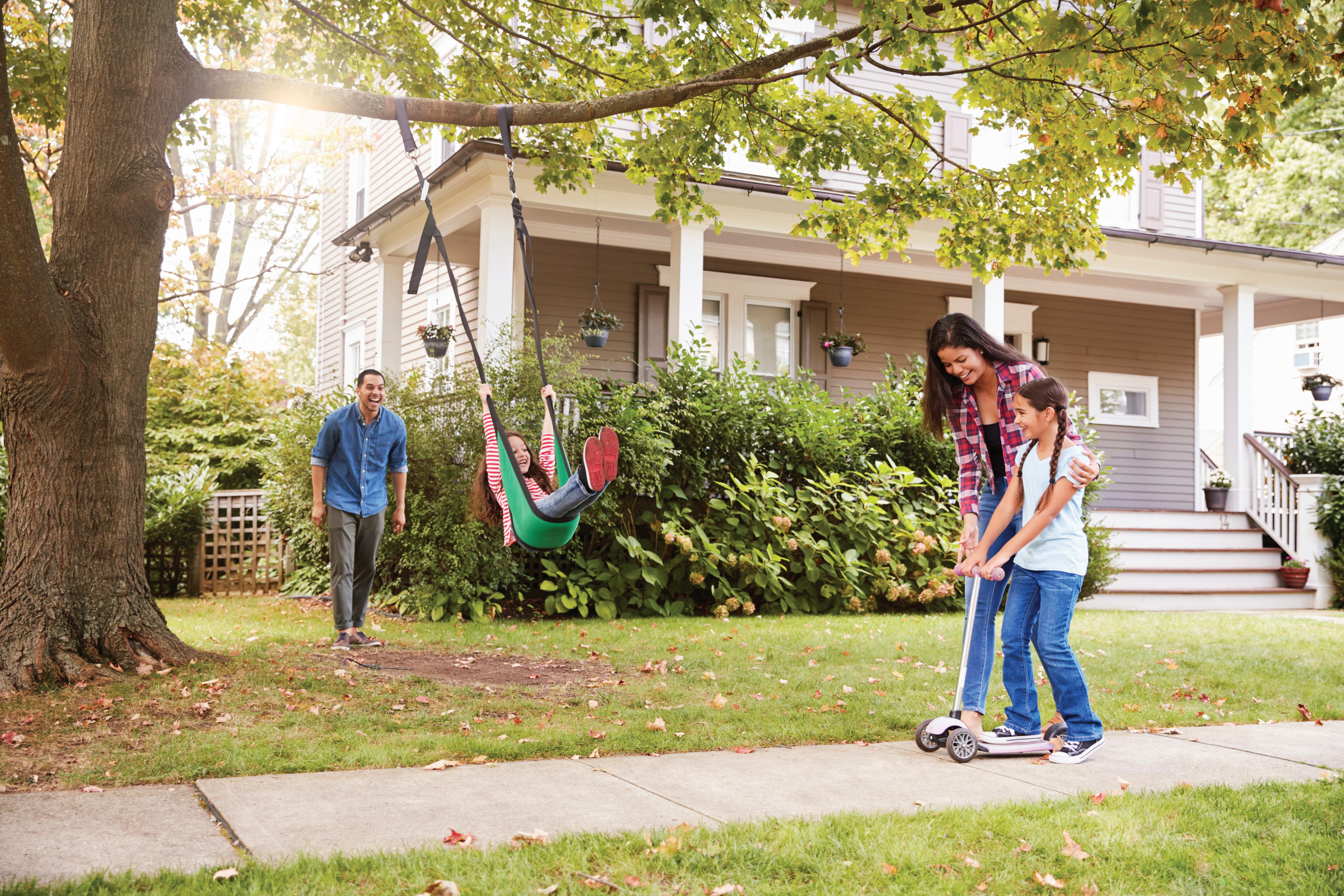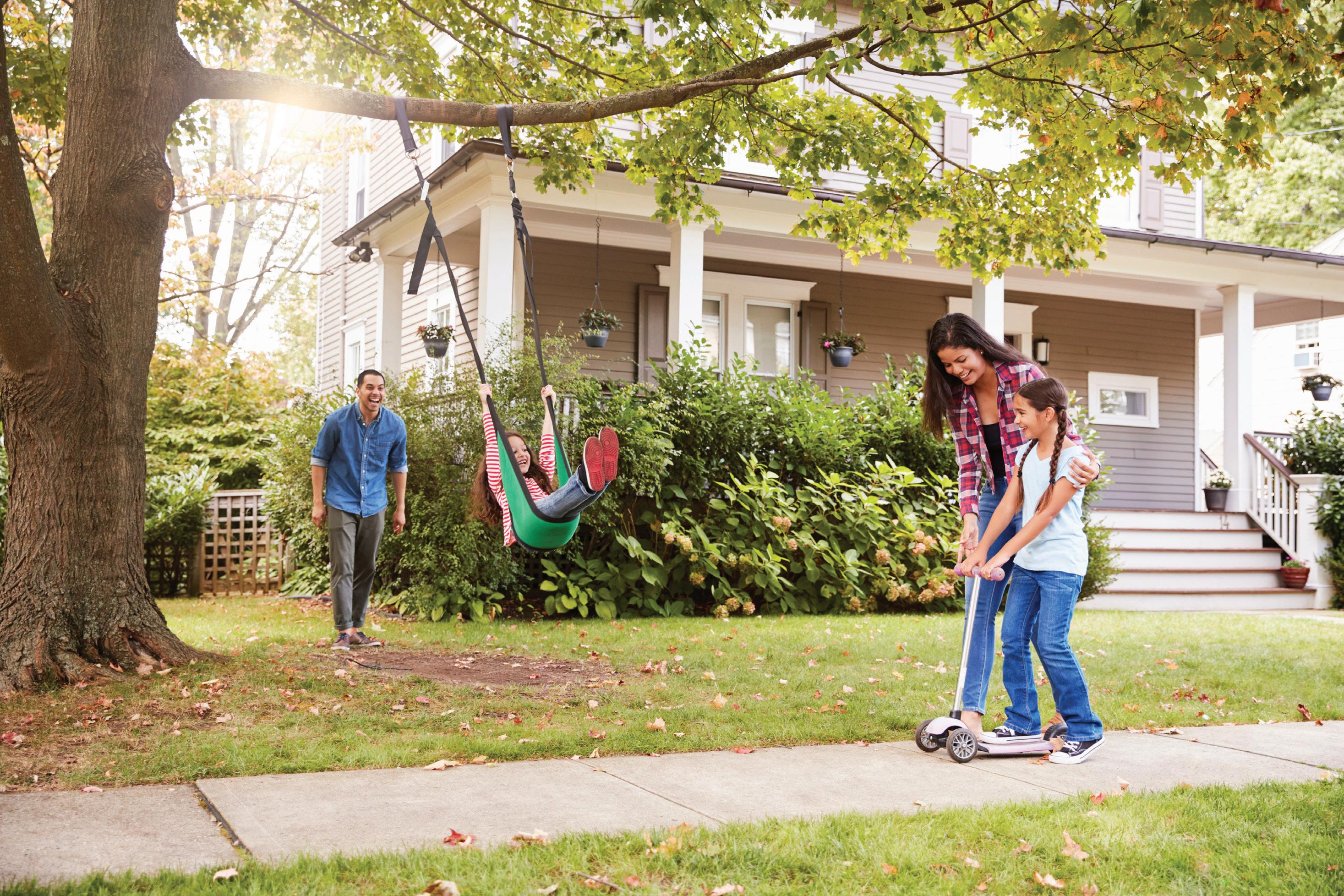

Don’t Get Overheated
Greenshoot Media
Summer is the time to enjoy the outdoors, but beware the sun
Heatstroke can impact anyone — even young people. That’s why it’s important to protect yourself from the year’s most powerful sunshine, and to hydrate often.

INSIDE THE NUMBERS
An average of 9,200 people are hospitalized annually with heat-related issues, and there are tens of thousands more who visit emergency rooms. Children take advantage of summer to play outside, and that can put them at a greater risk of exhaustion and heat stroke — in particularly if they haven’t beenasactiveduringtheschoolmonths. They also may fail to rest and rehydrate duringthehottestpartsoftheday.They are also at risk of being left behind by drivers: Nearly 40 children under age 15 die annually in hot vehicles.Pets are also endangered by temperatures that can quickly reach 120 degrees.
STAYING HYDRATED
As our body temps rise, we perspire and replacement fluids are required. Staying hydrated also eases the heart’s duties when pumping blood to our muscles. Monitor your hydration through the color of your urine.Those with the right hydration levels are
Take a Hike
clear and pale.Darker fluid means you need to drink more.These dangers are only heightened because some 75% of Americans in one survey had a net fluidloss—meaning,theywerealready dealing with chronic dehydration. About 520,000 people are hospitalized for dehydration annually in the U.S., and about 10,000 die.
PROTECT YOURSELF
Wearing clothing and sunscreen that protects your skin from the sun’s heat and damaging rays is critically important. One in five U.S. citizens will develop skin cancer over the course of their lifetime, according to the American Academy of Dermatology. The Academy recommends choosing broad-spectrum options that shield skin from both UVA and UVB rays. Look for water-resistant products with an SPF of 30 or higher. For another layer of protection,opt for long sleeves, pants and wide-brimmed hats when possible.
BE WEATHER WISE
Prolonged sun exposure can also lead to cramps, heat exhaustion and heat stroke – the latter of which happens when the body pushes blood away from your brain and other vital organs in a last-ditch effort to cool your skin. Try to avoid being outside during the hottest part of the day,or on days when the forecast calls for particularly high temperatures.
There’s adventure to be had whether at a park or on your own
You’ll need the right gear, and a good sense of where you’re headed. Once you get going, however, hiking can be one of the best ways to get needed exercise while communing with nature.

RULES OF THE TRAIL
Those on their way uphill are given the right of way. Hikers who are descending should come to a full stop and step aside so they can climb by. When allowed, bicyclists yield to all others, including those on horseback. Stay on the trail, unless you absolutely have to step aside while yielding. You can damage or even kill plants and animals without knowing it. Leave everything as you found it,and pack out all trash.
GEARING UP
This may look a lot like walking, but the long distances that are usually
Continued on page 7
Fun and Games
Greenshoot Media

There can be so much more to summer than swimming and suntanning
Unfortunately, most of us don’t have regular access to a luxurious pool or lazy beach. But you can still have plenty of summer fun with old standbys like Frisbees, volleyball or horseshoes — right in your own backyard. Here’s a look back at the fascinating history of these classic summertime games.

THROW A FRISBEE
One of the activities most associated with summer was actually discovered by happenstance. Walter Morrison and Lucille, his future
wife, began tossing a popcorn lid to one another out of boredom on Thanksgiving 1937. Finding it was fun, they brought a five-cent cake pan on a swimming trip and again began tossing it back and forth. When another beachgoer offered them 25 cents for the flying disc, Morrison realized he’d stumbled upon something that could perhaps turn a hefty profit.
He initially partnered with Warren Franscioni after World War II to make lighter, more durable plastic versions that served as the prototype for everything that followed. Later,
Fun
Continued on page 7
Boating Safety
Greenshoot Media




Don’t let a fun day on the water turn into a tragedy
Navigating a boat makes you responsible for the vessel itself, your own safety and that of your passengers, as well as other boaters and those tubing, fishing or jet skiing. Waterway rules and safety tips from organizations like BoatUS are meant to keep us all safe, and should be strictly adhered to. Unfortunately, unforeseen hazards like fire, damaging obstacles in the

ACCIDENT STATISTICS

Unfortunately, the U.S. Coast Guard reports thousands of boating accidents each year, with hundreds of unneeded deaths.Alcohol remains a contributing factor in as many as 20% of these fatalities, despite the consistency of warnings and strict laws. The actual cause of death is drowning in more than 75% of these cases, according to the Coast Guard. The vast majority of these tragedies canbeprevented.Some85%ofvictims weren’twearingalife preserver.More















































Kids Camps
Greenshoot Media
As summer drags on, children may need some new challenges
As school ends, it seems there are limitless possibilities for fun-seeking kids. But after a few weeks, they may become restless and bored.That’s why summer camps have been a mainstay for so long. Excite their imaginations with educational and skills-based opportunities, and help spend down some youthful energy with recreational activities and cooperative events.
WHAT THEY OFFER
There’s a camp to suit any child’s interest, from the sports-focused to the outdoorsy to the studious.

Traditional nature camps might offer options like camping and horseback riding, while sports camps drill in on needed skills to succeed at the next level. Science and math camps offer clinics designed to excite the mind. There are camps devoted to music, cheerleading, the arts and so much more.Many of them offer options for all ages,too.
Begin by searching local resources for camps in your area. More details can be found through the American Camp Association, which details camp accreditation and its history. Accredited camps must meet 250

Camps
Continued on page 7
Boating
Continued from page 4
than half of the children who die were also not wearing proper life jackets. Safety instruction classes were not attended by more than 70% of those who died after boating accidents.
RULES OF NAVIGATION
Therulesofnavigatingonwaterways have long been established, but don’t exist on street signs as they do on a roadway. The best way to learn them is to take an approved class.In general, boaters are responsible for driving at safe speeds, yielding to others, and powering down near marinas, homes and docks,among other safety actions. Drivers should also have a lookout to help identify oncoming traffic and potential water hazards.
WHAT YOU’LL NEED
Boats are required to have at least one approved life jacket for everyone on board. They should be in good condition and properly fitted, a critical issue for smaller riders and children. Everyone should know where extra life preservers are located, as well as key safety tools like a fire extinguisher, dock pole, radio and flares. Extinguishers are particularly importantbecauseofthepossibilityof fire around the engine or fuel system. Ideally, the lookout is also capable of operating the boat, should the driver become incapacitated. Every one should be familiar with the radio’s emergency channels, and be prepared to relay critical information if there is an emergency.
Hike
Continued from page 2
associated with hiking means you’ll need more specialized gear. More advanced hikes may require additional tools, as well. Invest in a pair of high-quality boots that can handle a wide range of terrain,so you won’t have to pause before venturing off paved trails. Depending on how rugged your surroundings are, you may also need a pair of hiking poles. Purchase a sturdy, roomy backpack to carry energy bars, a compass, flashlight,camping gear and water.
FINDING A PLACE
Hiking opportunities are all around us, from local parks to faraway adventures. Start with city or state parks, since they’ll typically have shorter, well-marked trails that provide more stable footing. As you grow more experienced and
Camps
Continued from page 6
confident, consider national parks and well-known major trailways. These government-run facilities will have maps and lots of helpful information on their websites. You can also consult independent sites like AllTrails.com.
SAFETY
First-timers should make sure they’re healthy enough to take up hiking. Don’t trust your gut instinct. Instead, visit a doctor to get a sense of how far you should push yourself. Start with shorter trips and a lighter backpack. You won’t need as much water or as many snacks, but don’t leave them behind. Pack sunscreen, a first-aid kit and pest repellent. Hiking with a friend is a good idea as you become more experienced, too.Once you’ve gotten the go-ahead from a medical professional and some shorter hikes under your belt, you and friends can take longer trips.
Fun
Continued from page 3
after forming his own company called American Trends, Morrison introduced new versions called Flying Saucers and Pluto Platters.Wham-O subsequently bought Morrison’s company, and the new owners coined a name that stuck — the Frisbee. By the1960s,they were everywhere.
PLAY VOLLEYBALL
The game of volleyball is much older, having been invented in 1895 by William Morgan, an athletics directorfortheHolyoke,Mass.-based Young Men’s Christian Association. He developed an early version of the game when he couldn’t find another indoor sport for businessmen who weren’t interested in or physically able to play basketball. Official rules for volleyball followed over the next few years, under the supervision
of the YMCA and the NCAA. By 1928,the U.S.Volleyball Association had been formed.
TOSSING HORSESHOES
This fun backyard game actually goes back centuries. The practice of throwing quoits, or iron rings, was enjoyed by both Roman officers and medieval peasants, who were said to have played their own versions of a game that closely resembled horseshoes. They may have only turned to horseshoes because they couldn’t find the proper iron rings. Settlers brought the tradition to the North American colonies, where it flourished. The National Horseshoe Pitchers Association was founded in 1926, and still oversees a series of championship tournaments.
different standards in program quality, health and safety, according to the ACA.Take into account not just the topics covered but the length of the camps themselves.
PREPARING YOUR CHILD
Summer camps offer lessons beyond the classes and events,as children learn more about living independently, acclimating to different environments and getting along with new acquaintances. When it comes to overnight, weekend or weekly camps,however,they may also feature an extended period away from home. In some cases, that can be the biggest adjustment of all. Camp may be the first time that they weren’t in constant contact through phone or text. So commit to writing each other often,up to and including once a day,if that will smooth the way.
Those who’ve already begun have sleepovers at a relative’s or friend’s house usually have an easier time being away, but any child is at risk of developing homesickness. Talk it all over before signing up, making sure that they are prepared for what’s involved. You may be able to save your child some stress if you notice signs of deeper sadness or extreme nervousness in these early discussions. It might be better to wait until they are older. Either way, many camps offer counseling from trained professionals to help with these difficult transitions — so be sure and inquire about those services.











